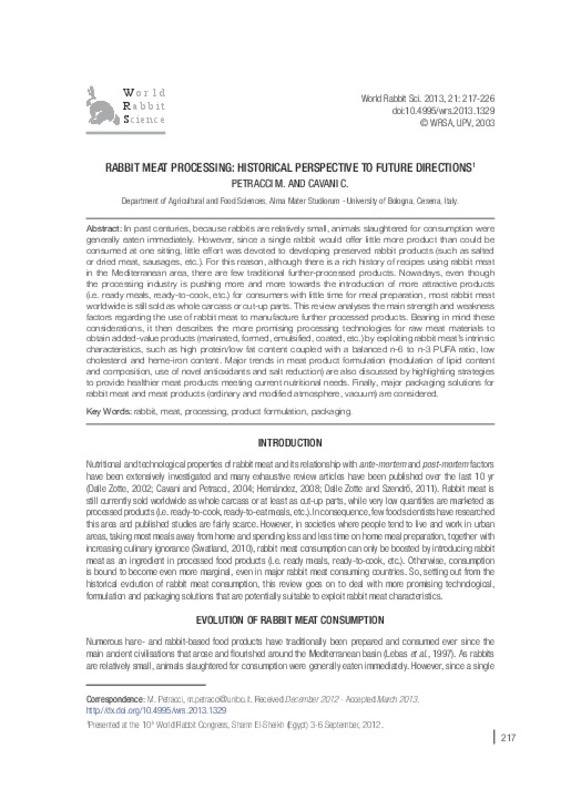JavaScript is disabled for your browser. Some features of this site may not work without it.
Buscar en RiuNet
Listar
Mi cuenta
Estadísticas
Ayuda RiuNet
Admin. UPV
Rabbit meat processing: historical perspective to future directions
Mostrar el registro completo del ítem
Petracci, M.; Cavani, C. (2013). Rabbit meat processing: historical perspective to future directions. World Rabbit Science. 21(4):217-226. https://doi.org/10.4995/wrs.2013.1329
Por favor, use este identificador para citar o enlazar este ítem: http://hdl.handle.net/10251/34953
Ficheros en el ítem
Metadatos del ítem
| Título: | Rabbit meat processing: historical perspective to future directions | |
| Autor: | Petracci, Massimiliano Cavani, Claudio | |
| Fecha difusión: |
|
|
| Resumen: |
[EN] In past centuries, because rabbits are relatively small, animals slaughtered for consumption were generally eaten immediately. However, since a single rabbit would offer little more product than could be consumed at ...[+]
|
|
| Palabras clave: |
|
|
| Derechos de uso: | Reserva de todos los derechos | |
| Fuente: |
|
|
| DOI: |
|
|
| Editorial: |
|
|
| Versión del editor: | https://doi.org/10.4995/wrs.2013.1329 | |
| Tipo: |
|








